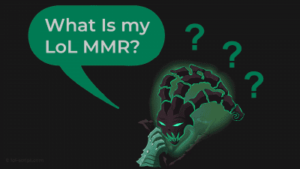The Importance of Recall Timing in the Laning Phase
In the fast-paced world of League of Legends, mastering recall timing, especially during the laning phase, can give you a significant edge over your opponents. This guide delves deep into the intricacies of recall timing in the laning phase, providing comprehensive strategies to empower your gameplay.
The Art of Recall: A Brief Overview
Before we dive into specifics, let’s define recall. In League of Legends, recall allows your champion to return to the summoner’s platform, replenishing health, mana, and providing an opportunity to purchase items. Perfecting recall timing, especially in the laning phase, could mean the difference between victory and defeat.
Factors to Consider for Optimal Recall Timing in the Laning Phase
Several factors come into play when determining the optimal recall timing during the laning phase. Understanding these factors and incorporating them into your gameplay is essential to maximizing your laning efficiency.
1. Health and Mana Levels
The most apparent time to recall is when your health or mana is low. However, in the laning phase, you also need to consider potential incoming threats. Always weigh the risks before initiating a recall.
2. Wave Management and Minion Waves
The state of your minion wave plays a vital role in recall timing. Ideally, you want to recall when your wave is pushed to the enemy turret, forcing the enemy to deal with the minions and reducing their opportunity to damage your turret.
3. Gold Accumulation
Accumulated gold is a crucial factor in recall timing. If you’ve amassed enough gold to purchase a significant item or upgrade, it might be an ideal time to recall. These items can significantly increase your strength in the laning phase.
4. Enemy Position and Map Awareness
Understanding the enemy’s position is essential when planning your recall. If an enemy champion is missing from the map, they may be planning an attack, making it a risky time to recall.
5. Timing with Your Jungler’s Position
The position of your team’s jungler can also affect your recall timing. If your jungler is nearby, it might be safe to recall even if an enemy champion is pressuring your lane.
Strategies for Effective Recall Timing in the Laning Phase
Now that we understand the factors affecting recall timing, let’s explore some strategies to maximize recall effectiveness during the laning phase.
1. The Cheater Recall
The cheater recall is a strategy where you manipulate the minion waves to allow a free recall. This strategy involves slow pushing the first three waves to crash a large wave into the enemy turret on the third wave, allowing you to recall without the enemy being able to push back in time.
2. Recall after a Successful Kill
If you’ve successfully killed your lane opponent, it often provides an excellent opportunity to recall. This window allows you to purchase items and return to lane as your opponent respawns and makes their way back.
3. Coordinating Recalls with Your Jungler
Recalling when your jungler is near your lane can be advantageous. Your jungler can hold the lane while you’re gone, ensuring that the turret doesn’t take significant damage and you don’t miss out on experience.
4. Recall after Securing an Objective
Securing an objective like the Rift Scuttler or Dragon in the early game often provides a good recall opportunity. These objectives give you extra gold, allowing for significant item purchases.
Mastering Recall Timing: A Path to Laning Dominance
Mastering recall timing during the laning phase in League of Legends isn’t just about knowing when to press the recall button. It’s about understanding the game’s ebb and flow, reading your enemies, and making strategic decisions. By incorporating these guidelines and strategies into your gameplay, you’ll find yourself better equipped to dominate the laning phase and pave the way to victory.
FAQs
Recalling is a mechanism that allows your champion to teleport back to the summoner’s platform. It replenishes your health and mana and provides an opportunity to purchase and upgrade items.
The standard recall time in League of Legends is 8 seconds. However, certain abilities, items, or runes can reduce this time.
Proper wave management allows you to create windows for safe recalls. For instance, pushing a large wave into the enemy turret forces the enemy champion to clear the wave, giving you time to recall and return without losing significant experience or turret health.
Precise recall timing can provide several advantages in the laning phase. It allows you to maintain lane pressure, purchase essential items, replenish health and mana, and minimize the risk of enemy attacks while you’re away from the lane.
Yes, the recall process can be interrupted if your champion takes damage. Therefore, it’s crucial to ensure you’re in a safe location before starting the recall process.



